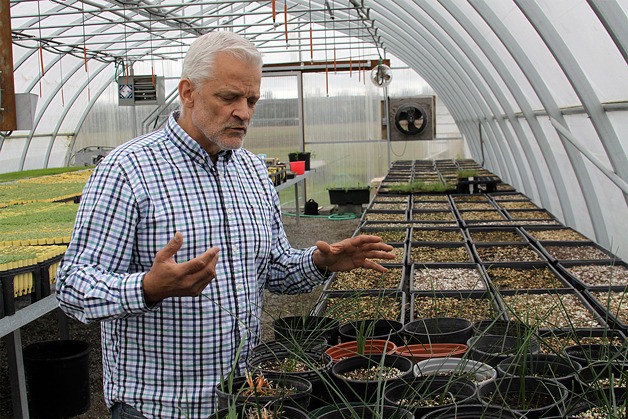Rarely a day goes by that Robert Pelant isn’t invigorated by some sort of interesting find on a sprawling piece of land he cherishes in Coupeville.
From Parker Road, passersby might see nothing but vast open prairie land, old pheasant coops and other plain structures on the 175-acre campus known as the Pacific Rim Institute of Environmental Stewardship.
What they can’t see in plain sight are the discoveries and environmental lessons uncovered at a learning center perpetually engaged in any number of research projects.
Recently, the Pacific Rim Institute’s contribution to a global environmental study was revealed in a research paper published in a January issue of the prestigious journal “Nature.”
The ongoing Nutrient Network study, led by the University of Washington, was trying to confirm if there is a direct relationship between the degree of biodiversity in an ecosystem and biological production by green plants.
The study involved more than 1,000 grassland research sites on five continents. The Pacific Rim Institute has been involved since 2007.
The study revealed that a direct relationship is present between such diversity and of species present and the biological production.
It shed more light on the benefits of companion planting and mycorrhizas, the symbiotic relationship between fungi and plant roots.
Diversity of certain plants species showed more production.

It’s the sort of stuff that excites Pelant, the institute’s chief executive officer.
“A lot of it has to do with things we don’t understand,” Pelant said. “There’s a whole world going on in our soil. We know less about that, and parts of our ocean, than we do about the moon.”
Association planting is already commonly practiced, including at the Pacific Rim Institute, which is involved in growing several rare prairie species on its campus and harvests the seeds to help with restoration efforts on the island and elsewhere, including contributing to a re-vegetation effort on San Juan Island last fall.
The institute devotes about 25 acres to native prairie restoration.
Among them is an undisturbed 4.5-acre old-growth prairie remnant, the site of research and seed cultivation to provide native prairie species to other regional sites.
“The impact goes considerable distances,” Pelant said.
It’s a busy time at the institute.
Aside from preparing for environmental courses that will be offered in partnership with the Au Sable Institute this summer, the Pacific Rim is involved in various projects and continued research.
It recently signed a five-year cooperative agreement with the National Parks Service to help with native plant restoration in the Ebey’s Landing National Historical Reserve at Ebey’s Overlook near Sunnyside Cemetery and the bluff above Ebey’s Landing.
The Pacific Rim is looking for volunteers to help with the plantings at the Overlook at 10 a.m. Thursday, April 21 and Saturday, April 23.
The institute will hold its annual open house and native plant sale, May 12-15. The event will include property tours, showcasing projects, facilities and nature trails.
For more information, or to volunteer, call 360-678-5586.


